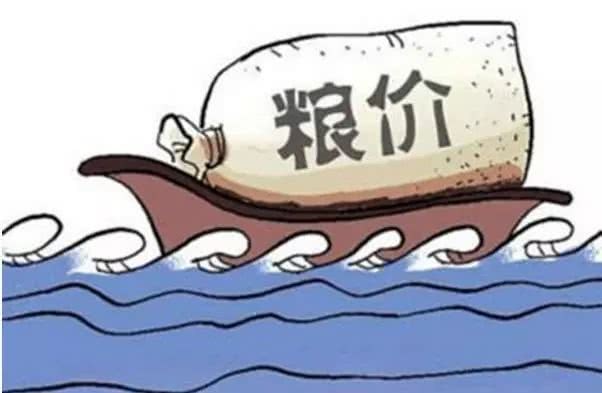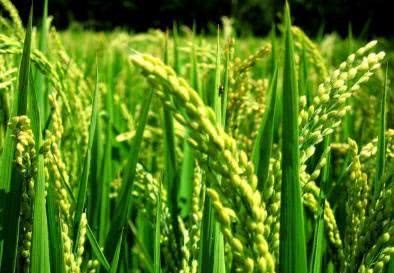The slow growth rate of grain prices in the past two years is what hinders the growth of grain prices?

Judging from the comparison between the growth rate of agricultural material planting costs and the growth rate of grain prices in recent years, the growth rate of grain prices is indeed too sluggish. In the case of corn, since the reform of grain harvesting and storage in 2015, the rate of increase has so far been no more than 30 or 40 percent. However, some agricultural materials have increased by 70 or 80 percent or even doubled. And with reference to the current level of price growth, it also appears to be quite sluggish. Corn is the largest increase in the price of these food crops, such as soybeans in China, and even a decline in price.
Replace high-definition large images
For the reasons for the slow growth or even decline of grain prices in China, scientific development of agriculture is mainly due to the following two reasons: 1, China's grain prices are too high; 2, China's grain supply exceeds demand.
Grain price in China
Many people think that the price of grain in our country is on the low side, but in fact, the price of grain in our country is really not low, and many people say that one jin of grain can not buy a bottle of mineral water, and if you go to the United States, three or four jin of grain may not be able to buy a bottle of mineral water. Relatively speaking, the price of grain in our country is really high. This is evident in soybeans and corn.
For example, the price of soybeans in the United States is equivalent to one yuan and one kilogram per jin, while the price of soybeans in China has reached 1.78 yuan. Even if the price of soybeans from the United States reaches the price level in China, it is only one yuan, five or six, one catty. This price level is too competitive than China's soybeans, and the oil production rate of soybeans in the United States is still relatively high. In other words, China's grain is still sold at high prices on the premise of low quality. From this point, it is indeed difficult for China's grain prices to keep up with the rising pace of market prices. After all, in today's economic globalization, import trade is also gradually exaggerated, and the impact on China's grain prices is also increasing. How can grain prices rise rapidly?
Food supply
Friends who understand the situation of grain supply in our country must be relatively clear that our country has already put forward the concept of grain supply-side reform. for grain, one of the major problems in our country at present is not the shortage of grain supply but the structural shortage of grain in our country. for example, the supply of wheat, corn and rice in our country is very sufficient, and it can even be said that grain depots have reached the point where they cannot be stored, so we should make great efforts to eliminate and reduce stocks. However, for grain such as soybeans, there is a serious gap in China's supply. In 2017, China's soybean supply gap of 95.53 million tons, nearly 100 million tons.
Due to the continuous auction of grain reserves to reduce stocks, but also promote the market grain supply is more adequate, the contradiction between supply and demand is not so prominent, naturally, there is a lack of motivation to support the rise in grain prices.
Replace high-definition large images
However, judging from the current situation of China's grain market, the biggest problem in restraining China's grain prices is that China's grain prices are on the low side. at present, market rations continue to impact the domestic market, which can be clearly seen from the soybean price in our country. China's soybean shortfall of 100 million tons is still not rising, and even the price is going down. It also shows that the impact of food supply on China's grain prices can only be short-term partial and can not interfere with the overall grain price trend.
Here is science to promote agriculture, welcome to add attention, with you to grow knowledge.
- Prev

The planting time of coriander is now suitable. Rubbing seeds before planting is more conducive to germination.
Coriander we call coriander here, I personally like coriander very much, especially when drinking beef soup and mutton soup, we must put a handful of parsley, so the taste is authentic. But there are also many people who don't like the taste of coriander very much.
- Next

How to manage rice during the critical period of rice growth in August?
Let's first take a look at the growth period of the waterway, the rice growth period is divided into three stages: 1. Vegetative growth stage (from germination to young panicle differentiation) 2. The stage of vegetative growth and reproductive growth (from young panicle differentiation to florescence) 3.
Related
- Wuhan Hospital Iron Tree Blooming Result Was Instantly Frightened by the Gardener Master
- Which variety of camellia is the most fragrant and best? Which one do you like best?
- What is the small blue coat, the breeding methods and matters needing attention of the succulent plant
- Dormancy time and maintenance management of succulent plants during dormancy
- Minas succulent how to raise, Minas succulent plant pictures
- What are the varieties of winter succulent plants
- How to raise succulent plants in twelve rolls? let's take a look at some experience of breeding twelve rolls.
- Attention should be paid to water control for succulent plants during dormant period (winter and summer)
- Watering experience of twelve rolls of succulent plants
- Techniques for fertilizing succulent plants. An article will let you know how to fertilize succulent plants.

